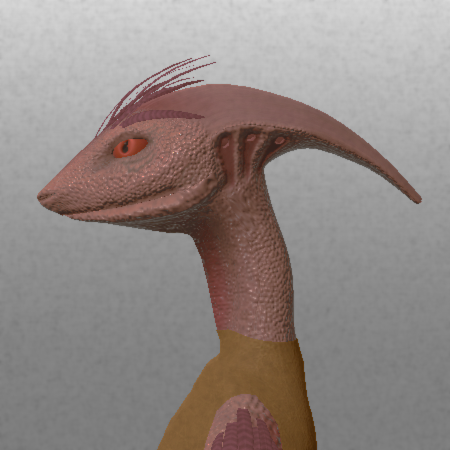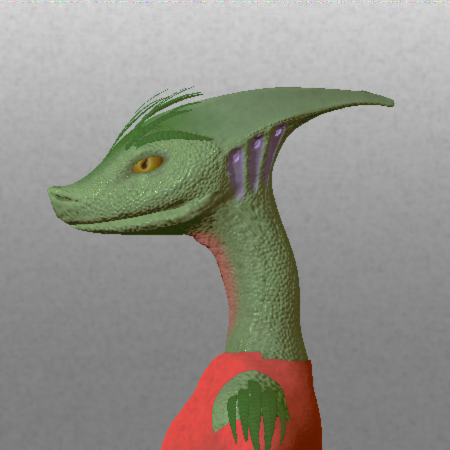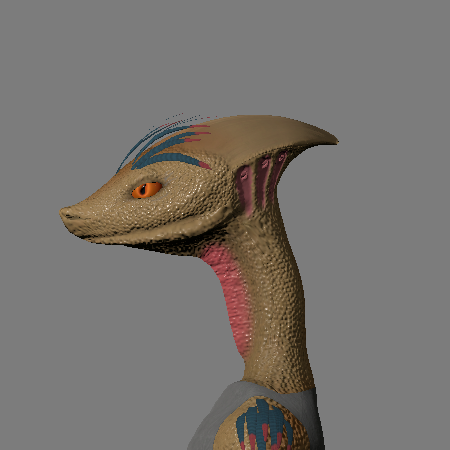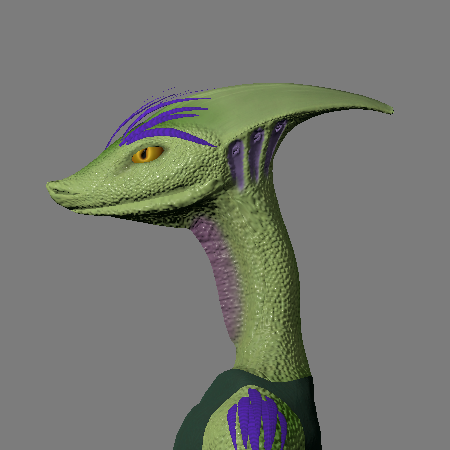Rul Cranial Crest
The bony protrusion at the back of the Rul skull.
Anatomy
Overall Shape
The crest accounts for a major part of the skull's length, between one third in adolescents and up to two thirds in elderly individuals. At the base its cross-section is nearly elliptical whereas the bottom side becomes more flattened towards the notably thinner tip.Ear Cavities
The lower part near the base of the skull is marked by six ear canals, three on each side. They connect to two elongated cavities on either side of the brain case.Nasal Passageways
The upper part of the crest contains numerous winding canals which end in three openings at its tip. These canals are lined with mucous skin and densely covered in olfactory receptors.Functions
Ears
The large ear cavities houses the six ear drums and the various receptors picking up their oscillation. Since the ears are spread out along the crest, sound can be located with great precision.Hind Nose
While the nose at the front of the head serves to breathe in and smell the outside air, the passageways in the crest serve to expel the used air and analyze it on the way out. This serves two main purposes. First, it increases the chance of breathing in fresh, oxygen-rich air through the frontal nostrils. Second, the chemical composition of the exhaled air gives information about the body's health which plays an important role in regulating the metabolism.Identification
Age
The crest grows longer over the course of a Rul's life. A widely accepted theory is that this crest helped to show an individual's age and therefore their status within prehistoric societies.Ethnicity
Before the Final War, the shape of the crest was an indicator of an individual's geographic origin. The cultures in the west of Mustik Hamesi tended to have crests that curved downwards, whereas those in the east generally had straighter crests which pointed upwards. These differences became more pronounced once the rift between the Rilanga and the Ran-E-Zu deepened and the gene pools were separated more strictly. Today's Rilsu, however, no longer have this clear distinction after the survivors of the Final War were systematically interbred.Temperature Regulation
Besides the aforementioned functions, the increased surface area of the crest also aids in cooling down the blood, especially during the extreme temperatures of the Heat Season. The thin, scale-less skin which covers the bony shell is unable to store much warmth. This allows the heat to dissipate quickly. During winter, blood is retracted from this area to in order to conserve energy.~25 cm (adult)
~40 cm (elderly person)
inner cartilage walls
mucous skin lining
thin outer skin layer








Comments
Author's Notes
The bone crest was heavily inspired by that of Parasaurolophus, so I had a look at theories regarding its use for these dinosaurs. I have been using the shape to indicate age and ethnicity for some time now, but I wanted to give it an actual biological function as well. For some reason, the idea of a back-facing nose spoke to me, so I put some thought into what this might imply. What do you think of the result? Do the functions of the crest make sense to you?